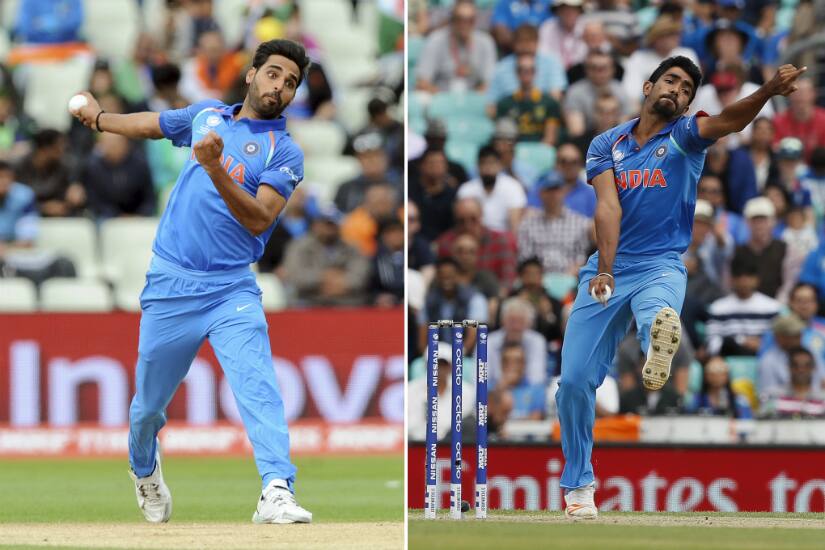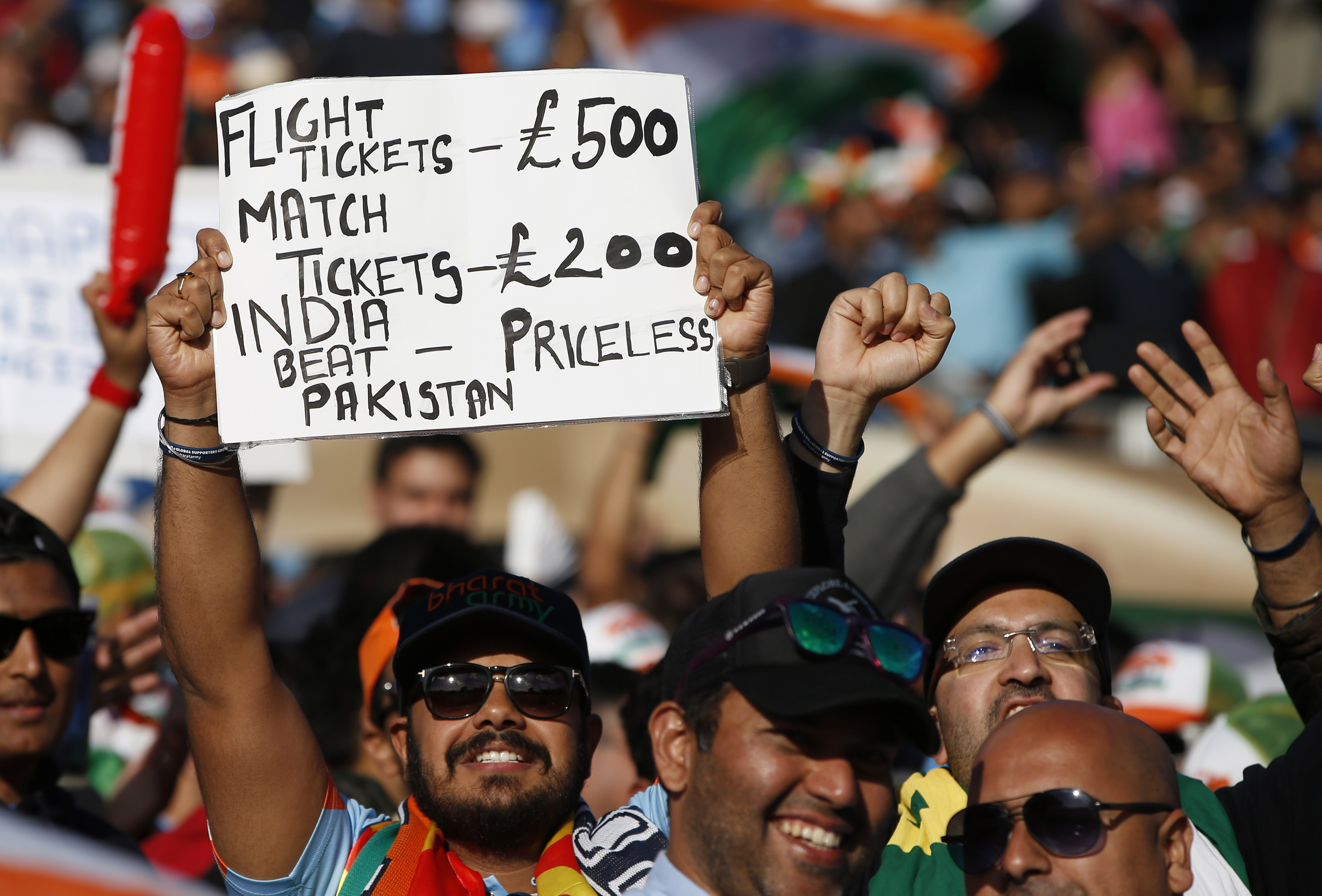It’s Sunday afternoon. But it’s not any other Sunday afternoon. You haven’t slept the night before in anticipation of this particular Sunday afternoon. There’s too much adrenaline. Your heart’s racing. The hair on your arms and the back of your neck stand up as if called to attention. Mum’s put herself in charge of catering and she’s getting the namkeen ready. Dad’s got his presbyopic glasses and inarguably taken up the best seat in the house. Your sister’s on the phone with Domino’s, who always seem to appreciate the significance of such Sundays and oblige us with BOGO coupons, even if their interests are more self-serving rather than honourable. Promocode: INDVPAK [caption id=“attachment_3690473” align=“alignnone” width=“825”] Indian fans have had a lot to celebrate over the years , unlike their Pakistani counterparts. Reuters[/caption] Yet, as the match ends after all the media circus, fan hysteria and redundant analysis, in terms of entertainment and quality of cricket, your Sunday feels wanting. Be it family tradition, an inexplicable allure to a team’s ethos or mere geography, India taking on Pakistan has always been a hyped affair in our two countries. The geopolitical quandary and our shared colonial history makes each victory a moment of national catharsis. Therefore, the smothering media try to puff up the contest into the be-all and end-all of modern cricket games. There are tailor-made advertisements, promotions and merchandising with businesses trying to enhance the situation for their own profit. News media, along with its nefarious little sibling social media, guides and dictates what to like and hate. They made thousands of Indians, who had never watched a boxing match in their lives, tune in to watch Floyd Mayweather Jr vs Manny Pacquiao. But what is the hype about when there’s no trial or challenge? Since they first met in 1992 World Cup, India-Pakistan matches in big tournaments feel like a battle where the enemy failed to show up. India have always won these overhyped affairs rather convincingly. [caption id=“attachment_3690233” align=“alignnone” width=“825”]
 Wasim Akram, Waqar Younis and Shoaib Akhtar tormented quite a few batsmen in their heyday. Reuters[/caption] At least, from the 90s to 2000s, there was a biting contest between the versatility of Pakistan’s fast bowling and the ingenuity of Indian batsmen to look forward to. India’s second-rate bowling and Pakistan’s mediocre batting would negate each other. In the past couple of years, India have mustered an effective, if not as fearsome, bowling attack to back up their strong batting. For Pakistan, it must feel like a dark, frigid and foggy alternate universe where 11 anthropoid predators, native to said dimension, await their prey. Their very own Upside Down.
Wasim Akram, Waqar Younis and Shoaib Akhtar tormented quite a few batsmen in their heyday. Reuters[/caption] At least, from the 90s to 2000s, there was a biting contest between the versatility of Pakistan’s fast bowling and the ingenuity of Indian batsmen to look forward to. India’s second-rate bowling and Pakistan’s mediocre batting would negate each other. In the past couple of years, India have mustered an effective, if not as fearsome, bowling attack to back up their strong batting. For Pakistan, it must feel like a dark, frigid and foggy alternate universe where 11 anthropoid predators, native to said dimension, await their prey. Their very own Upside Down.
#INDvPAK
— Ramesh Srivats (@rameshsrivats) June 4, 2017
This is so easy that the next Congress booklet will describe Birmingham as India Occupied Edgbaston.
The India-Pakistan contests have started to feel like a film franchise that greedy producers have been trying to milk way past its shelf life. They resemble messy and woeful sequels with repetitive plot lines and we always see the punchline coming an hour before the climax. The last time I remember it being a tight contest was in 2007 World T20, which had the neighbours meeting twice: in the group stages and in the final. One was a bizarre tie at Durban — which India still won after a bowl-out — and the other one had Pakistan out-Pakistan themselves to lose by 5 runs. [caption id=“attachment_3691859” align=“alignnone” width=“825”] Will Pakistan fans go back home disappointed yet again? AP[/caption] Ten years later, they meet yet again in the 2017 Champions Trophy. Twice. The first encounter in the group stages felt like spirited youth taking on sloppy sexagenarians as Pakistan succumbed to a walloping 124-run defeat. After the inevitable hype, you have to say it was a foregone conclusion. The embarrassing defeat led to a resurgence of sorts as Pakistan registered victories against South Africa, Sri Lanka and the trenchant hosts, England. The bowling attack against India in the opener seemed to lack the potency you come to expect of Pakistan but Junaid Khan’s inclusion and Hasan Ali’s redemption in the following games helped change things around. Though India have had the advantage over Pakistan in ICC tournaments, their bowling will again be vital in swinging the pendulum their way. The Champions Trophy tournament suffers from an existential crisis. It was scrapped in 2013 to make way for a new ICC World Test Championship to tackle the tapering popularity of Test cricket. Then, ICC cancelled plans for Test cricket’s premier championship and brought back Champions Trophy into the calendar. So, what we are witnessing is a reincarnation of a tournament that quashes the aura of being crowned world champions for winning the more important World Cup. Just ask Australia. [caption id=“attachment_3690491” align=“alignnone” width=“825”]
 India have a potent, if not fearsome. attack in Bhuvneshwar Kumar and Jasprit Bumrah. AP[/caption] The rebirth hasn’t been easy for Champions Trophy as the format of one-day cricket itself is suffering from an identity crisis. With a new T20 league popping up almost every year and spectators’ dwindling attention spans, it is hard to foster interest in a match which lasts for, more or less, eight hours. There’s too much cricket all year round and fans are losing the appetite for the longer formats. This Champions Trophy has hardly been a great advertisement for the ODI format. It has been mostly anticlimactic. Other than a couple of upsets, if you could even call them that, there have been one too many one-sided contests. The uncooperative English rain brings the world’s two most loathed statisticians, Duckworth and Lewis, into the picture and their notoriety does anything but sustain the interest of spectators. By limiting the number of venues to just three (London, Birmingham and Cardiff), ICC has further alienated fans from other cities. With flat pitches that hardly offer any movement, the nature of the surfaces has produced a subcontinental contest for a final.
The Final sees the team with the highest batting average in CT17—India 91.50—play the team with the most wickets in CT17—Pakistan 31. #CT17
— Freddie Wilde (@fwildecricket) June 15, 2017
This clash of neighbours and old enemies has captured the ethos of entire generations of Indians and caters to cricket fans all over the world and it continues to empower them. Though they have often crumbled under seemingly overwhelming expectations, the onus lies with Pakistan to redeem the tournament and help the ODI format survive by offering us a thrilling contest this Sunday. Let’s hope for the sake of Indians, Pakistanis, fans and cricket itself, they do.


)

)
)
)
)
)
)
)
)



